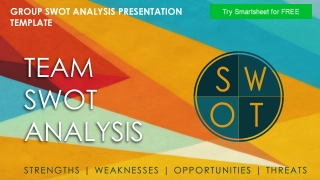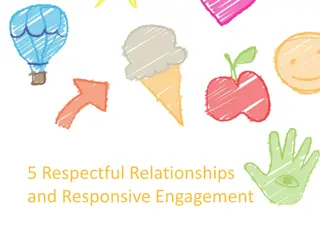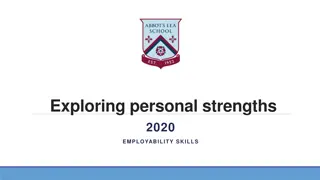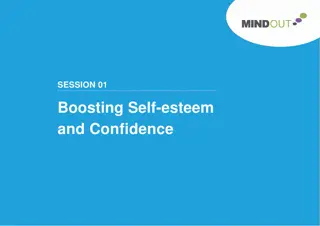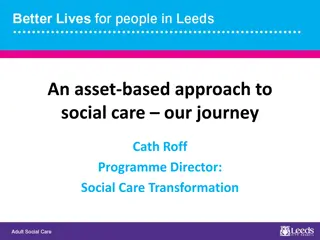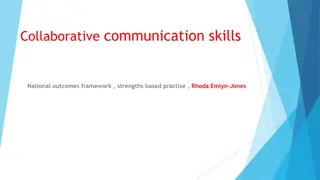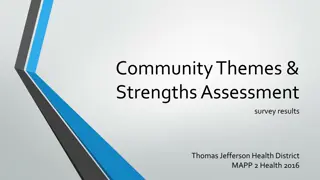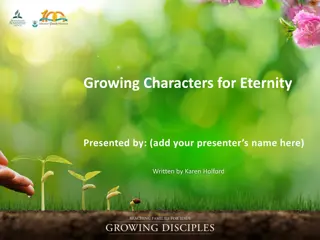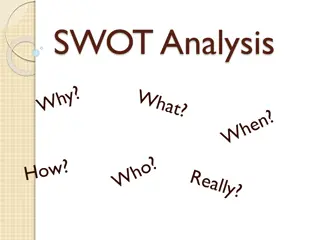
Understanding Community Needs & Strengths: Native American Youth & Family Center - Insights from Assessment
Gain insights into the strengths and needs of the Native American Youth and Family Center through a comprehensive assessment, focusing on dating violence, domestic violence, sexual assault, and stalking. Discover available services, gaps, and diverse demographic details of participants.
Download Presentation

Please find below an Image/Link to download the presentation.
The content on the website is provided AS IS for your information and personal use only. It may not be sold, licensed, or shared on other websites without obtaining consent from the author. If you encounter any issues during the download, it is possible that the publisher has removed the file from their server.
You are allowed to download the files provided on this website for personal or commercial use, subject to the condition that they are used lawfully. All files are the property of their respective owners.
The content on the website is provided AS IS for your information and personal use only. It may not be sold, licensed, or shared on other websites without obtaining consent from the author.
E N D
Presentation Transcript
NAYA COMMUNITY-WIDE STRENGTHS & NEEDS ASSESSMENT Youth and Education Services designed and conducted a community-wide Strengths & Needs Assessment in order to Identify available services and gaps Assess the level of knowledge, perceptions, and attitudes of dating violence, domestic violence, sexual assault and stalking within the Native American Youth and Family Center s Early College Academy (NAYA ECA).
PARTICIPANTS Three independently sampled groups Customized surveys Written and online Participants 77 Early College Academy (ECA) Students out of 100 total 12 Staff 12 ECA Parents Timeline Surveys fielded from November 2013 through January 2013
TERMINOLOGY USED Teen defined as: 15 to 19 years old Parent/Guardian defined as: Respondents who have guardianship of a child attending the Early College Academy Staff defined as: Respondents who are employed by NAYA Dating Relationship defined as: A boyfriend/girlfriend relationship Also referred to by teens as, hooking up TDV defined as: Teen Dating Violence
STUDENT RESPONDENT DEMOGRAPHICS Gender Gender Age Age 19+ Male Female 2 Spirit Age 18 Age 17 Ethnicity Ethnicity Latino 23% Age 16 Native 37% Age 15 Asian 3% Age 14 White 25% Black 12% Question posed to students: #1 What is your age? #2 What is your gender? #3 How do you identify (ethnicity)?
PARENT RESPONDENT DEMOGRAPHICS Age of ECA Youth Age of ECA Youth 10% 14 15 16 17 18 (0%) 19+ 5% Male Gender Gender 35% Ethnicity Ethnicity Female 22% Latino 11.1% 35% Asian 5.6% 15% Native 38.9% 78% White 38.9% Black 16.7% Question posed to parents: #1 What is your gender? #2 How do you identify? #3 What is the age of your ECA youth?
STAFF RESPONDENT DEMOGRAPHICS 60.0% 54.5% 40.0% 13.6% 20.0% 15.9% 6.8% 9.1% 0.0% AlwaysUsually About Half of the Time Rarely Never Staff Response Question to Staff: #1 During the school year how often do you work directly with the NAYA Early College Academy (ECA) youth?
BRIEF SUMMARY OF FINDINGS Dating and relationships start younger than originally believed by staff and parents Sex is assumed to be a part of a teen dating relationship Teen dating violence and sexual assault has been and is being experienced by ECA students Youth, parents and staff want more training and information on healthy relationships
AGE DATING RELATIONSHIPS BEGIN 11% 2% At Age 16 or Older 3% 33% At Ages 15-16 5% 13% 45% At Ages 13-14 52% 32% 11% At Ages 11-12 32% 34% 0% At Age 10 or Younger 9% 17% 0% 10% Parents 20% Staff 30% Students 40% 50% 60% Question to Students: #6 At what age would you say people usually begin having a boyfriend or girlfriend relationship? Question to Staff: #6 At what age would you say people usually begin having a boyfriend or girlfriend relationship? Question to Parents: #9 At what age would you say people usually begin having a dating relationship?
INTIMACY IN TEEN DATING RELATIONSHIPS Perceptions Perceptions 66.70% Sex (going all the way) 22% 28% Parents 43.90% Oral Sex 17% 9% Staff 60% Touching & Feeling 20% 13% 73% Students Making Out 20% 22% 73% Kissing 21% 28% Question to Staff: #7 In your opinion, what would you say is part of a boyfriend or girlfriend relationship among the ECA youth? (Mark all that apply) Question Parents: #10 In your opinion, what would you say is part of a dating relationship among ECA youth? (Circle all that apply) Question to Students: #7 In your opinion, what would say is part of a boyfriend or girlfriend relationship among the ECA youth? (Mark all that apply)
DATING VIOLENCE DEFINED BY STUDENTS 90.0% 84.2% 80.0% 70.0% 59.5% 60.0% 48.6% 50.0% 40.5% 40.0% 30.0% 20.0% 13.5% 10.0% 0.0% Hitting/Punching Telling a partner who they can hang out with Texting a partner 20 times a day to see where they are Calling a partner out of their name Not calling a partner back when they said they would Response Percentage Question to Students: #32 What behaviors/actions define dating violence? Mark all that apply.
TEEN DATING VIOLENCE/ARGUING/FIGHTING 5% Always 25% Sometimes 70% Never Question to Students: #15 In your dating experience, how often do you and your partner(s) argue?
TEEN DATING VIOLENCE/ARGUING/FIGHTING CONTINUED 3% Shouting Always 21% 21% Aruging 37% 60% Sometimes Hitting/Shoving 25% 33% Name Calling/Put Downs Never Question 16 Question 17 Question to Students: #16 In your dating experience, how often do you and your partner(s) fight? Question to Students: #17 Fighting is defined as? Mark all that apply.
TEEN DATING VIOLENCE/ARGUING/FIGHTING CONTINUED 7% Strongly Agree 21% Somewhat Agree 46% Somewhat Disagree 26% Strongly Disagree Question to Students: #28 How much do you agree or disagree with the following statement: Physically hurting a partner is a serious problem for people my age.
IS TDV A CONCERN FOR HIGH SCHOOL YOUTH? DO THEY IDENTIFY IT AS A PERSONAL PROBLEM? 30 20 10 0 General Concern for High School Youth Personal Concern
YOUTH STRONGLY AGREE THEY CAN IDENTIFY WARNING SIGNS TDV 3%3% Strongly Agree Somewhat Agree 35% 59% Somewhat Disagree Strongly Disagree Question to Students: #30 How much do you agree or disagree with the following statement: I know the warning signs of a bad or hurtful relationship.
CAN YOUTH IDENTIFY WARNING SIGNS OF TDV? Parent Response Parent Response 45% 40% 35% 30% 25% 20% 15% 10% 5% Parent Response 0% Strongly Disagree (11.8%) Disagree (17.6%) Neither Agree Nor Disagree (23.5%) Agree (41.2%) Strongly Agree (5.9%) Question to Parents: #11 I believe ECA youth can identify the warning signs of teen dating violence.
CAN YOUTH IDENTIFY WARNING SIGNS OF TDV? Staff Response Staff Response 50% 40% 30% 20% 10% Staff Response 0% Strongly Disagree (6.8%) Disagree (36.4%) Neither Agree Nor Disagree (45.5%) Agree (11.4%) Strongly Agree (0%) Question to Staff: #8 I believe ECA youth can identify the warning signs of teen dating violence.
FOCUS GROUP RESPONSE I think a lot of our families don t always see things as teen dating violence, domestic violence, stalking or sexual assault. They aren t aware that a lot of their behavior is domestic violence because they are so used to it. ECA Administrator I just feel like this is a big issue for a lot of our kids, it just seems like as you talk to them they are all in unhealthy relationships. ECA Teacher It might seem normal for them to be arguing and yelling and getting close to hitting, but not hitting. ECA Teacher
SEXUAL ASSAULT PERCEPTIONS Slapped on butt 61.3% Sex with someone under the influence 77.3% Rape 90.7% Not giving consent 84.0% Forced to have sex 90.7% All of the above 57.3% 0.0% 20.0% 40.0% 60.0% 80.0% 100.0% Question to Students: #40 What behaviors/actions define sexual assault? Mark all that apply.
STUDENT RESPONSE TO THE QUESTION: IS SEXUAL ASSAULT A CONCERN? 30 20 10 0 General Concern for High School Youth Personal Concern
NOT ALL STUDENTS AGREE WITH THE STATEMENT, WITHOUT CONSENT, SEX IS RAPE. 100.0% 83.1% 80.0% 60.0% 40.0% 20.0% 2.8% 14.1% 0.0% Agree Student Student Responses: Responses: Disagree I Don't Know
WHAT STUDENTS SAY CONSENT IS Youth responses to the prompt: My definition of consent is To give permission. Saying yes and allowing it to happen. To ask before or talk about it. IDK (I don t know) When they both are okay with whatever they decide. Consent is when someone tells someone yes or no. Saying no when no is an option. Both partners saying yes and having the option to say no. Is saying yes while being above the influence. Never heard of it. Being sober of mind and body to allow someone else to do something Someone agreeing to have sex when asked, not being pressured or forced.
YOUTH SPEAK ON SEXUAL ASSAULT Mediator: (Asking a theoretical question) You hear a girl was sexually assaulted at a party and the perpetrator goes to school here too. Whose fault is the sexual assault? Respondent 1: It s not the victim s fault. R2: Honestly I don t know [whose fault it is]. It depends on who the person is. She may have given some signals that she wanted to mess with him or she was drunk and did not know what she was doing. R3: I was thinking she probably did something for that to happen. I don t think it wouldn t be anybody s fault. R4: It s mainly the guy s fault because he s the one that pushed himself on her but the girl could have done things to lead up to that she could have been drunk or high. R5: It depends if they were intoxicated or high because if you are sober and the person you done that to isn t I think it s the victims fault but if you re both messed up it s hard to tell. Either way both people could be (mumbled) with each other and it can lead to different things. It s half and half. All female focus group
YOUTH SPEAK ON SEXUAL ASSAULT I can be with a girl I know, and we know each other and I try to like you know, touch on her or something to try to start it off but she s not with it, but that s not sexual assault to me that s just her not being with it, but if I m doing that to a girl I don t know then that s sexual assault. When it happens outside of school ain t nobody going to snitch depending on who sees it. The girl could have done something she wasn t supposed to do. (In response to the question of who is to blame for a sexual assault) I really don t know the definition of sexual assault. I don t get how it can be sexual assault in a relationship with a girl you like, how can it be a sexual assault? Say I m about to do something and she say no but then your like, fuck it, you re in a relationship . That s sexual assault. - -Male Student Responses Male Student Responses
COMMUNITY RESOURCE KNOWLEDGE 90.0% 81.3% 80.0% 70.0% 60.0% 47.4% 50.0% 35.5% 40.0% 30.0% 17.1% 20.0% 18.8% 10.0% 0.0% Yes No Unsure Students Parents Question to Students: #16 If you or someone you know has experienced teen dating violence, do you know community resources that can help? Question to Parents: #15 Do you feel confident in your knowledge of resources that can help survivors of teen dating violence in your community?
PERCEPTIONS OF ECAS INTERVENTIONS Nothing (18%) Offer to help them find someone to talk to about their abusive behavior (50.8%) Let abuser know that they have zero tolerance for abuse in relationships (44.3%) Have clear consequences for the behavior (39.3%) Stop abusers when they begin to make excuse or blame others for their behavior (52.5%) Speak out when you see and hear about abuse (68.9%) 0% 10% 20% 30% 40% 50% 60% 70% 80% Question to Students: #57 Question to Students: #57 How do you think you feel that the NAYA Early College Academy asks staff How do you think you feel that the NAYA Early College Academy asks staff and students to hold perpetrators/abusers accountable? and students to hold perpetrators/abusers accountable? Mark all that apply. Mark all that apply.
YOUTH SPEAK ON ECA RESPONSE I feel like if it does happen, the school should get involved. What if she is hiding a bruise and the guy leaves bruises? If it happens off campus, then it is not the school s responsibility. They shouldn t push the person or people to talk about [it], but if it happens on campus it happens. If a survivor complains to a teacher, the school should take responsibility. The school should not get involved unless they are open to talk about it. If they are not comfortable with that it could cause more problems. If I got abused or sexually assaulted and still in school, I wouldn t want everyone to know about it. I would want confidential meetings with a counselor or something so at least you would know you are being supported and in a safe environment. Yea like having an advocate to really talk to because a lot of people who get abused, they don t know who to talk to, you re just like who do I talk to? - Female Student Responses
PARENTAL TITLE IX KNOWLEDGE 81.3% 68.8% 100.0% 31.3% 50.0% 18.8% 0.0% Do you know what Title IX is? Do you know who the Title IX Coordinator is for NAYA ECA? Yes No
WHERE DO YOUTH RECEIVE IDEAS ON DATING RELATIONSHIPS?
IMPACT Awareness of healthy relationship behaviors, knowledge of abuse amongst all groups, knowledge of traditional views regarding healthy relationships, oppression, the effects of colonialism, traditional gender roles, cultural practice philosophy, school s response to abuse, survivor s safety and perpetrator accountability Teen dating violence, domestic violence, stalking & sexual assault
IDENTIFIED GAPS, SERVICES RESPONSE, AND NEXT STEPS Support and knowledge from community stakeholders. Encourage students to seek help from NAYA staff & community resources, knowledge of local and national resources, overall acceptance of violence in order to report, prevent and stop violence. NAYA & Staff Parents & Teachers knowledge, engage, articulate expectations of healthy relationships, respond effectively to incidents, implement prevention activities in classroom, enhance curriculum and referrals to support. student knowledge, bystander responsibility, train student allies, develop peer-to-peer support, encourage student reporting of interpersonal violence Students
THANK YOU TO PARTNERS This project was supported by Grant No. 2011-GW-AX-K004 awarded by the Office on Violence against Women, U.S. Department of Justice. The opinions, findings, conclusions, and recommendations expressed in this publication/program/exhibition are those of the author(s) and do not necessarily reflect the views of the Department of Justice, Office on Violence against Women.


